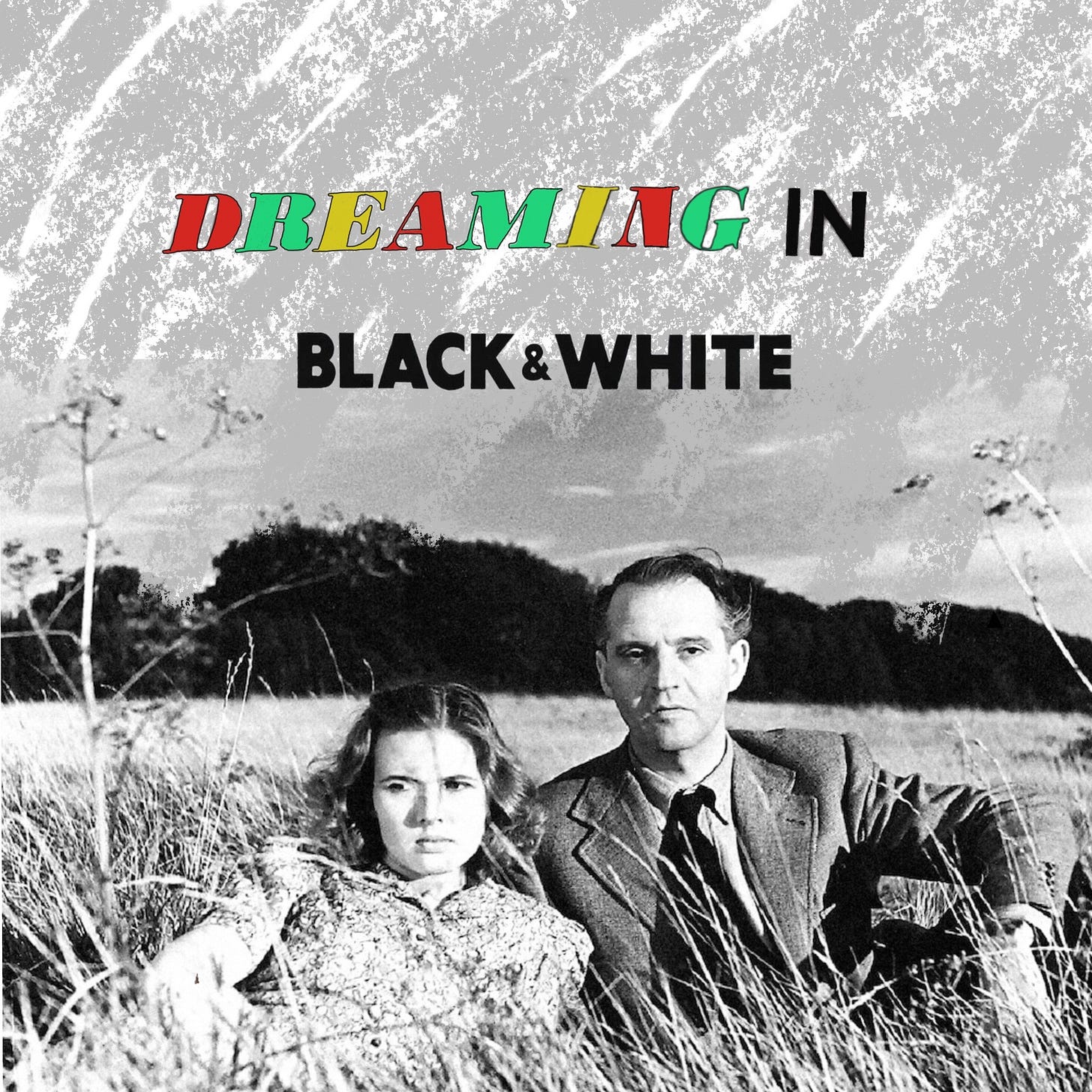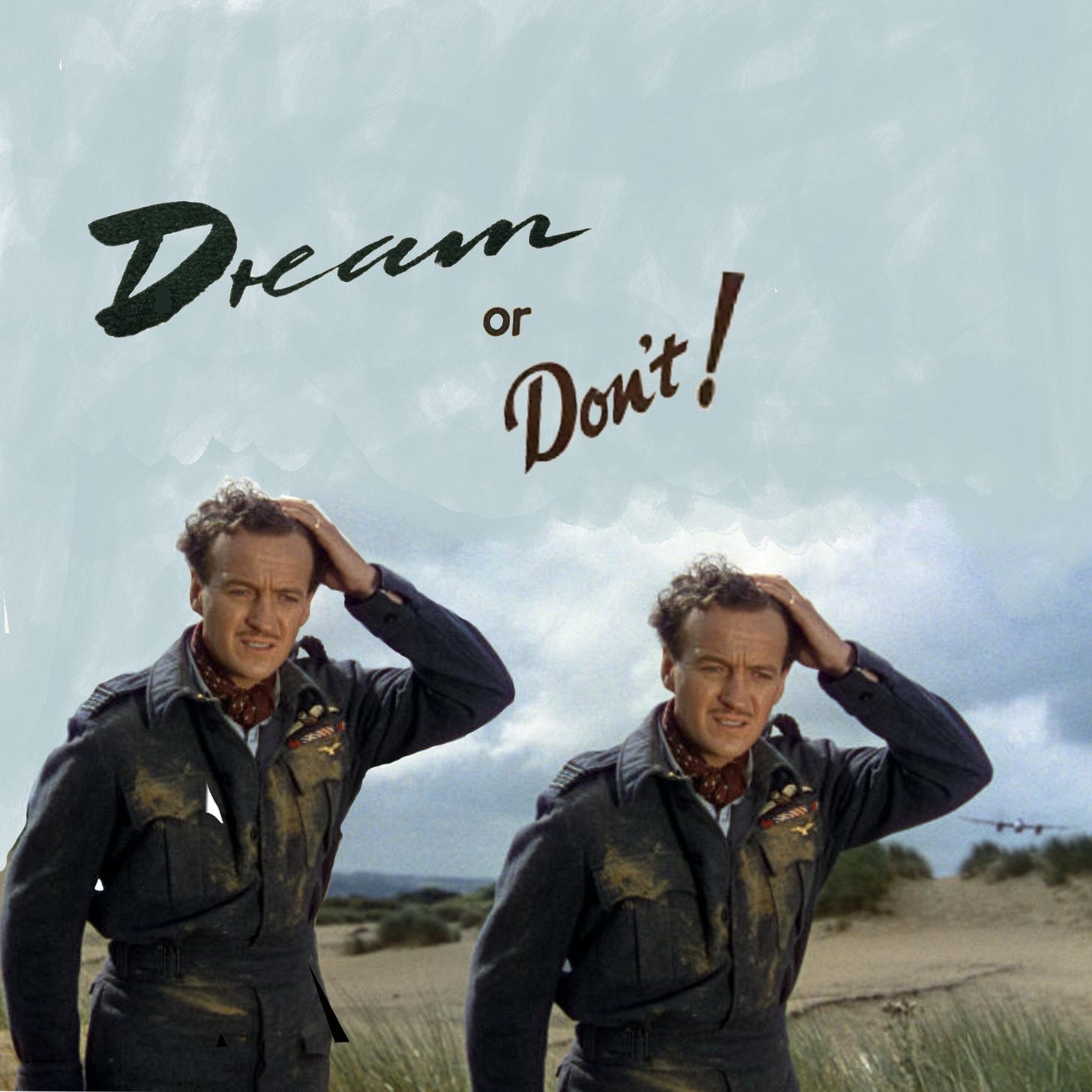Dreaming In Technicolour
David Lynch was one of the many directors to make the comparison between films and dreams. Fellini is surely another. Stanley Kubrick too perhaps, although I haven’t asked the latest AI expert to make sure for me.
There have been plenty of dreamers in cinema, and there have been plenty of realists too. Loach, Losey, and Leigh, to name three all beginning with the letter L.
What is a dream? I don’t know. It is, I assume, a matter of alchemy in the brain. Chemicals fusing with other chemicals to create moving pictures in your sleeping mind. A placeholder until morning.
There is something about dreams though. When a bad circumstance occurs, or a good one, you can be aware sub-subconsciously that what is happening is not real. You may be overjoyed, anxious, terrified, sad, distraught in the dream, but there is the slight feeling of relief, or sadness, somewhere, that all is imaginary. Your dream is almost lucid.
The colour of dreams is another hint. Dreams can seem real but because our brains can’t mimic the exact phases of the sun during the day or the moon at night, something seems off, the colours are not quite right. Unless you are Rembrandt of course. His rendering of candlelight in a dark room is so perfect that it feels like if you blow on the canvas the flame will fizzle. No, Rembrandt’s dreams must have been perfectly lit.
Dream researchers in the 1940s and 50s concluded that because the majority of media at that time, be it cinema, or newspapers, was in black and white, this caused people to dream in black and white too. In fact in 1951 Calvin S. Hall, an American psychologist, estimated in an article for Scientific American that only 29% of American dreams were in colour.
I don’t know about you, but I dream in Technicolour. Yet, if Instagram stories and TikTok and Netflix and your work laptop were all in black and white, then your dreams would most likely lack for colour too, or at least according to Calvin S. Hall they wood. Maybe if I devoted the next month to watching only the Criterion Channel’s endless collection of Noir curios my dreams would be different.
When colour was finally brought into films the tone of American movies was different from the paint palette dreamed up for British ones. The British palette was much more refined than their garish American equivalent. It was painterly. More Constable than Turner. More real than dreamy.
A more hedonistic UK experimentalism did arrive though with the films of Michael Powell and Emeric Pressburger. Their 1946 film A Matter of Life and Death encapsulates that feeling of being in a lucid dream. The plot involves an RAF pilot in the Second World War miraculously surviving a plane crash, a miracle the celestial authorities view as a clerical error, a clash of opinion that culminates in the pilot fighting for his life on Earth in a heavenly courtroom.
The film is split between black and white and rich dreamy Technicolor, and in a brilliant twist it is the real world on Earth that is presented in all its vibrant colours while heaven is a bureaucratic black and white, full of vast waiting rooms and filing cabinets. In fact, when Conductor 71, a pre-revolution French dandy, is dispatched from heaven to collect the pilot he finds him in a earthly garden full of saturated bloombux magenta rhododendrons, prompting the dandy to remark “one is starved for Technicolour up there.”
The cinematographer on the film was Jack Cardiff, who’s use of rich colour in the movies he worked on was compared to Caravaggio and Vermeer. Together with Powell, he would come up with innovations to create their dreamlike world, like blowing on the camera lens to create a foggy aura on the beach the pilot crash lands his plane on at the start of the film, or by using pinkish, saffron, lime green, bluebell blue and yellow filters to diffuse light.
Which reminds me. I was recently in Saffron Walden, a little market town in Essex about an hour and a half train and bus ride from London. There is something about that extra little bus ride through the countryside tacked onto the train journey that makes you feel as if you are travelling back in time to get there.
The colourful town itself is filled with timber medieval buildings seemingly untouched by the centuries. On the hill overlooking the village there is a huge parish church with a tall spire and a long nave, funded by the saffron taken from the stigmas of crocus that still grow in the green woods that surround the town. There is a pristine Victorian garden too, filled with rhododendrons, follies, summerhouses and even a hedge maze with its dead-ends guarded by stone lions with their tongues sticking out.
Was all this a lucid dream or an April outing? I think I know. But it certainly felt for a moment or two like I had been transported into a Powell and Pressburger film. Which is why I was surprised to spot a blue plaque affixed below the open window of one of those ancient houses, which read ‘Jack Cardiff 1914 - 2009 lived here’.
I swear I didn’t know when I set off on the train, but I was so happy to see it.




